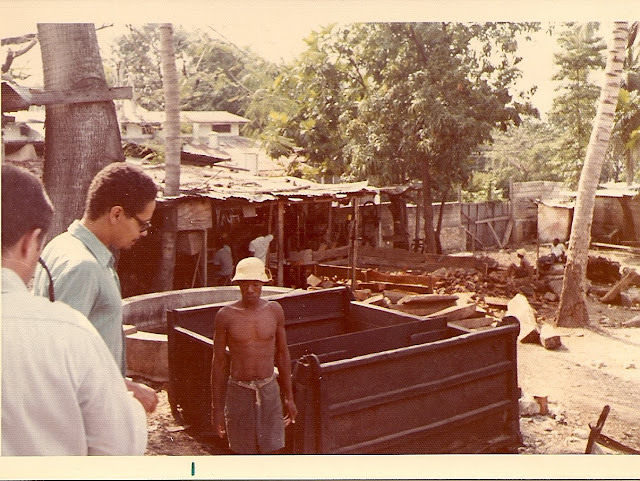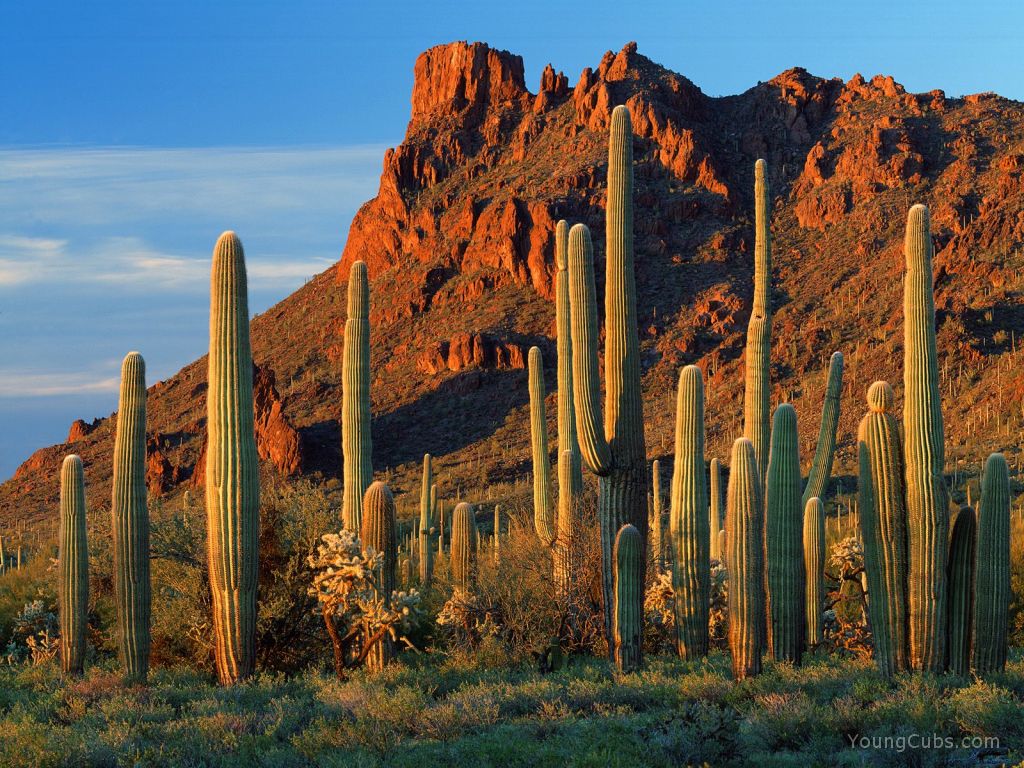Imagine a place where every parent's dream is to send their child to school. Education is the only hope for survival, for a chance at a better life. It is THE key. It will never happen for 90% of Haiti's population. School costs $40.00 a month. Most Haitians are lucky to get $2.00 a day. How would you live on $1300.00 a year? This country is poor in a way almost impossible to understand, unless you have been there.
These photos were taken in 1970, almost 40 years ago. They could have been taken a week ago, just before the earthquake. Saying that Haiti is the poorest nation in the Western Hemisphere doesn't do much to convey what this kind of poverty looks like. And it just got a lot, lot worse.
Olaffson's Hotel was a true landmark. It was the hotel of Graham Green's novel, The Comedians, and a watering hole for intrepid travelers for decades. This was the balcony out side my room. The little goat on the roof woke me up every morning, clip, clopping across the tin with it's bell jingling. It was charming.
This was not the scene for most of the population. Although Port Au Prince was a destination, it was never a thriving port. And the poverty was just too prevalent to hide. The lack of restaurants and basic amenities was obvious. There was no industry. Most Haitians couldn't afford to shop in stores anyway.
This "cottage industry" was a salad bowl factory. Nearby, square wooden plates were made. Beyond that were the looms and farther along, goat skin rugs.
The Cathedral was the center of the best part of town. As of Tuesday, it no longer exists.
 Shopping along the center of town increased dramatically when the ships arrived in port. This is looking toward the cathedral in the far distance. The port is behind you here, several blocks away. The streets become dramatically busier and filthier, the closer to port you get. Although the city has grown to nearly 750,000 the construction standards have not improved. Zoning and planning, indeed forethought of any kind is not a function of unstable governments. Not unless there is a significant kickback.
Shopping along the center of town increased dramatically when the ships arrived in port. This is looking toward the cathedral in the far distance. The port is behind you here, several blocks away. The streets become dramatically busier and filthier, the closer to port you get. Although the city has grown to nearly 750,000 the construction standards have not improved. Zoning and planning, indeed forethought of any kind is not a function of unstable governments. Not unless there is a significant kickback. The majority of the population lives like these scenes below and on the right above. Life is lived as it happens. Tomorrow is too far away to worry about. Eating today is the problem. There are more people dying of desease and malnutrition than is believable, or conscienable, in a country so close to our shores.
The power of the government to promote positive change quickly disappears when all one's resources are spent in maintaining power. Governments don't pass from one elected official to the next in Haiti. Governments, such as they are, are usually overthrown.
Haiti is in one sense, disaster prone. It's geography puts it right in the path of hurricanes entering the Gulf of Mexico or going up our eastern seaboard. If it isn't hit directly, torrential rains combine with environmental degradation and total deforestation that result in frequent and significant loss of life from flooding and mudslides.
Vulnerability to disaster is a direct function of poverty and illiteracy from which it becomes a monumental task to bounce back. Added to it's lack of infrastructure, little rule of law and few natural resources, these economic and natural catastrophes have brought the country to it's knees.
There is so much to do that it is almost overwhelming to think about. Broken down into managable tasks at hand, it becomes simpler.
The first task is to survive until tomorrow and then the day after that. Here is how to help.
www.unicefusa.org
www.redcross.org
www.clintonbushhaiti.org






























.jpg)















wow, linda, this is very informative. i didn't know you lived in the dominican republic.
ReplyDeleteto you the truth, these photos look better than i would have expected. when i was in turks and caicos, years ago, the residents there looked down on the haitian, kind of 'they move in and there goes the neighborhood.' i found that amazing, turks and caicos being a poor country itself at the time. we seem to need hierarchies, believing that no matter how tough things may be, somebody's 'less than' below us.
still, let's hope haiti recovers. i think of our 9-11 and then i think of the magnitude of this.
♥
Thank you Linda. Viewing the current devastation on CNN makes it impossible to visualize Haiti before this latest disaster. Your "before" photos make the unspeakable, mind-blowing devastation more real, more personal.
ReplyDeleteLorna
hellooooooo!
ReplyDeletehow are you?
:)
Thanks so much for steering me over here ! Your pictures from the 1970's are remarkably well preserved... and what a tale they tell. CNN had a photo of the cathedral in ruins in one of their galleries, along with many other tragic shots. This is so big as to be nearly inconceivable. Haiti clearly left a strong impression on you, as I guess it does on most anyone who has been there. I loved Graham Greene's book The Comedians, though I didn't stay at the Olaffson. I wonder if the Olaffson survived ? I wonder if the house we stayed in, up above Petionville on the road to Kenscoff survived... And if the hotel we stayed at in Jacmel made it or not. I heard Jacmel was 65% destroyed... it was a beautiful place.
ReplyDeleteYes, thank you so much for this thoughtful look back...
Linda,
ReplyDeleteThank you for mentioning my blog on your blog roll. And thank you for writing this and bringing awareness to the social injustice and tragedy in Haiti. At the turn of a storm there is always a sunrise...let us hope we learn from this tragedy to not only look with eyes that see but with hearts that reach out and help.
Food, shelter, and education are universal rights.
kj,
ReplyDeleteI think it will be years to get back to where they were and that was not much of a life. When I lived in Dom. Rep., my housekeeper was terrified of the avocado seller - he was Haitian. She believed Voodoo would claim her soul, such nonsense. So few people "get" Haiti.
Lorna,
So sad the the "before" pictures were 40 years old and not very different from present day Haiti.
kj,
Hiiiiii. Better now, back online!
Owen,
I love your pictures of Haiti and the portraits of the Haitians you met. I remember stunning, statuesque people with blue black skin and ready smiles, despite crushing poverty. It just breaks your heart.
Isabel,
They are, if we can logistically get past the rubble to reach needy people. An ineffective government is going to be a real problem.
And you are welcome - I love the way you write. Your blog is one of my first stops of the day.